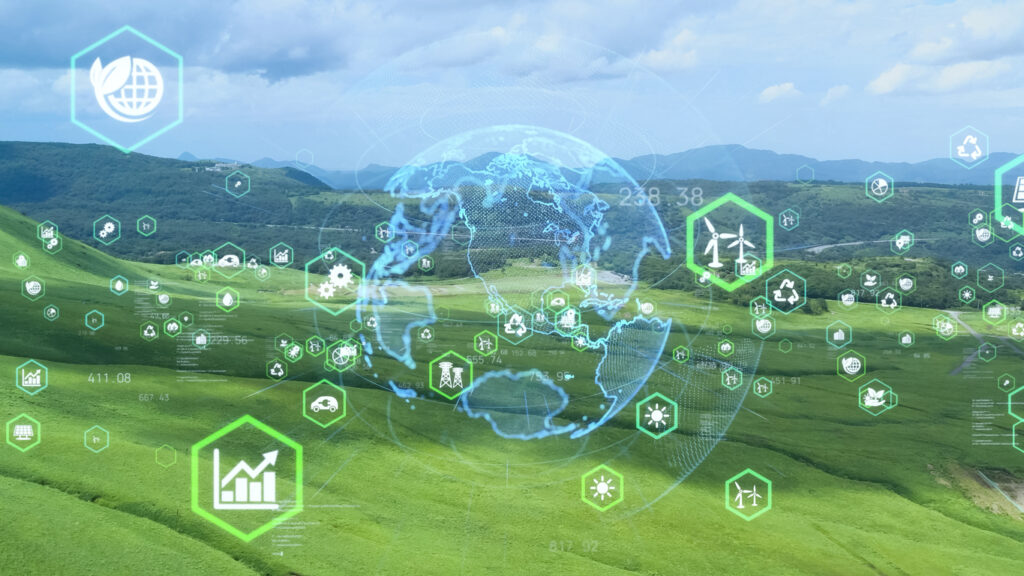Editor’s Note: Today’s post is by Nicola Davies. Nicola is Senior Publisher at IOP Publishing.
Open data is essential for transparency, reproducibility, and trust in research — key pillars of open science. While some funders, such as the National Institutes of Health (NIH) in the U.S. and UK Research and Innovation (UKRI) in the UK, have strengthened their policies to require open data sharing, many researchers are still not making their data publicly available. An analysis of over 30,000 Institute of Physics Publishing- (IOPP) published articles found that only one in ten researchers in the physical sciences share their data in a way that aligns with the FAIR principles—Findable, Accessible, Interoperable, and Reusable.
In environmental research, however, we are seeing a shift toward more open practices. Our recent analysis, supported by Dataseer, revealed that a growing proportion of environmental researchers are already sharing their data. Recognizing this momentum, IOP Publishing now requires researchers submitting to two of our environmental journals to share the underlying data for their papers. Not planning to share your data? No acceptance — unless there’s a compelling reason it can’t be shared. This move directly responds to the needs of researchers who are committed to sharing their data in a FAIR way alongside their published articles.

Why FAIR matters
The FAIR principles have been around since 2016 and are now widely recognized as the gold standard for data management. Developed by academics, librarians, and industry professionals, these guidelines ensure that research data is not just available but also well-organized and reusable. At IOPP, we actively promote these principles. We encourage authors to use standardized metadata, persistent identifiers, and clear usage licenses to ensure their research data can be easily located and properly attributed.
The evolution of our open data policy
Our mandate to disclose research data openly alongside submitted papers is the latest step in our journey toward greater transparency in scholarly publishing. In 2022, we required all authors to include a data availability statement in their articles. By 2023, we went further, asking authors who could not share their data to provide a justification. Now, our latest move — requiring open data for all submissions to Environmental Research: Food Systems (ERFS) and Environmental Research: Climate (ERCL) —is our most significant step yet toward greater transparency.
What are the risks?
There is always the risk that stricter requirements will deter submissions. Tsuyoshi Miyakawa, Editor-in-Chief of Molecular Brain, faced a similar challenge. In a 2020 editorial, he shared that when he requested raw data from 41 manuscripts, 21 were withdrawn, and 19 were rejected due to insufficient data. That means over 97% of those cases were unable or unwilling to present the raw data supporting their results — raising the question: did the data even exist? Of course, in some cases, there may be legitimate reasons for withholding data, such as concerns over patient privacy, intellectual property, or competition. But in environmental science, these constraints are typically less prevalent, making open data sharing both a feasible and necessary step toward greater transparency and reproducibility.
We’re eager to see how environmental researchers respond to our new policy. With data sharing becoming increasingly common in this field, we anticipate that the policy will align with this growing culture of openness. Will it encourage greater transparency and collaboration, or could it inadvertently discourage submissions? We’re hoping it will drive the field toward more rigorous, trustworthy science.
Recognizing legitimate barriers
Although we are committed to making scholarly communications more transparent, we recognize that not all research data can be shared openly and that other research communities are not yet in the same state of readiness for such a policy as in environmental science. Our recent analysis of publication data from more than 30,000 articles highlights that many researchers rely on third-party data — often owned by government agencies or private organizations — creating legitimate barriers to open sharing. We also learned that researchers’ perceptions and experiences vary across regions. In China and India, researchers are most likely to cite unfamiliarity with repositories as a key obstacle, whereas in the UK, concerns focus on data confidentiality and accessibility. In the US, the most common issue is that the data format may not be usable, even if shared, underscoring the need for better standards, tools, and a stronger culture of data management to enable wider access and interoperability. These barriers need to be addressed in a tailored and collaborative way. That is why our new data policy allows for exemptions where necessary and is only applied to two journals that serve a community that is already geared toward sharing their research data. We also believe that supportive policies tailored to the varied needs of research communities, greater awareness, and better training will be essential to making open data the norm rather than the exception.
As part of our efforts to facilitate data sharing, we have also introduced Dataset Articles in some of our environmental research journals. Dataset Articles provide structured, well-documented data that can be reused by other researchers. By providing detailed descriptions of data collection, processing, and potential applications, these articles enhance reproducibility, allowing other researchers to verify findings, build upon existing work, and generate new insights.
By strengthening our data-sharing requirements and offering options to share data in formats that suit the diverse needs of our research communities, we are advocating for better research practices. Change is not always easy, but we believe this step will help us to uphold the integrity of scientific publishing and create a potential launchpad for extending our policy to other journals too.
Discussion
4 Thoughts on "Guest Post — No Data? No Acceptance. How IOP Publishing is Strengthening Open Science"
Thanks Nicola, an excellent TSK article, and study of the 30,000 articles, it’s great that IOP Publishing was able to share the informative White Paper – Research transparency, FAIR data, and ideally reproducibility of research are all key areas to support great trust in science – Technology can now better help editors and authors also know what data should be shared, and where it should be shared. Further down the line, with AI and more, I believe there will be further breakthroughs in science, and potentially business models around research stacks (all the digital assets of the research shared together)! Kudos to IOP for this bold step forward, one of many you have taken!
Thanks Adrian! I’m so glad you found the article and study insightful. It’s such an exciting time for Open Science, especially with all the ways we can enhance our processes and infrastructure. Keep an eye on our website—we’ll be sharing more updates soon on our next steps in supporting Open Science!
Nicola, I appreciated your post and reading about IOP’s efforts to promote open science. I hope it nudges the field. I’m a longtime SK reader interested in how the publishing industry embraces or just gives lip service to open science. I recalled a post from years back where Phil Davis speculated that PLOS ONE’s requirement for authors making data publicly available at time of article submission contributed to their decline in popularity compared to the lax policy at Scientific Reports. Be interesting to hear an updated perspective from PLOS. Mine is that open science has become normalized for some science communities and journals, and things might be settling to an angle of repose.
It was interesting to see environmental science (my field, cough, cough) led the pack in transparency in Daniel Keirs’ analysis of IOP’s publications. I’m a little dubious though, since sample sizes weren’t given and might be small(?). I say that because I didn’t even realize the Institute of Physics published on water, ecology and such. Maybe I need to get out more.
Thank you for your comment Chris. When we examined the barriers researchers face in sharing their data openly, we analysed over 30,000 papers. You can find the detailed numbers in the methodology section of Daniel’s report here (https://ioppublishing.org/barriers-to-sharing-data-openly-methodology/). It’s really encouraging to see that researchers in the environmental sciences are embracing open data sharing. We believe that with a tailored approach that considers the unique barriers faced by different research communities, we can develop publication strategies that effectively support these communities.



